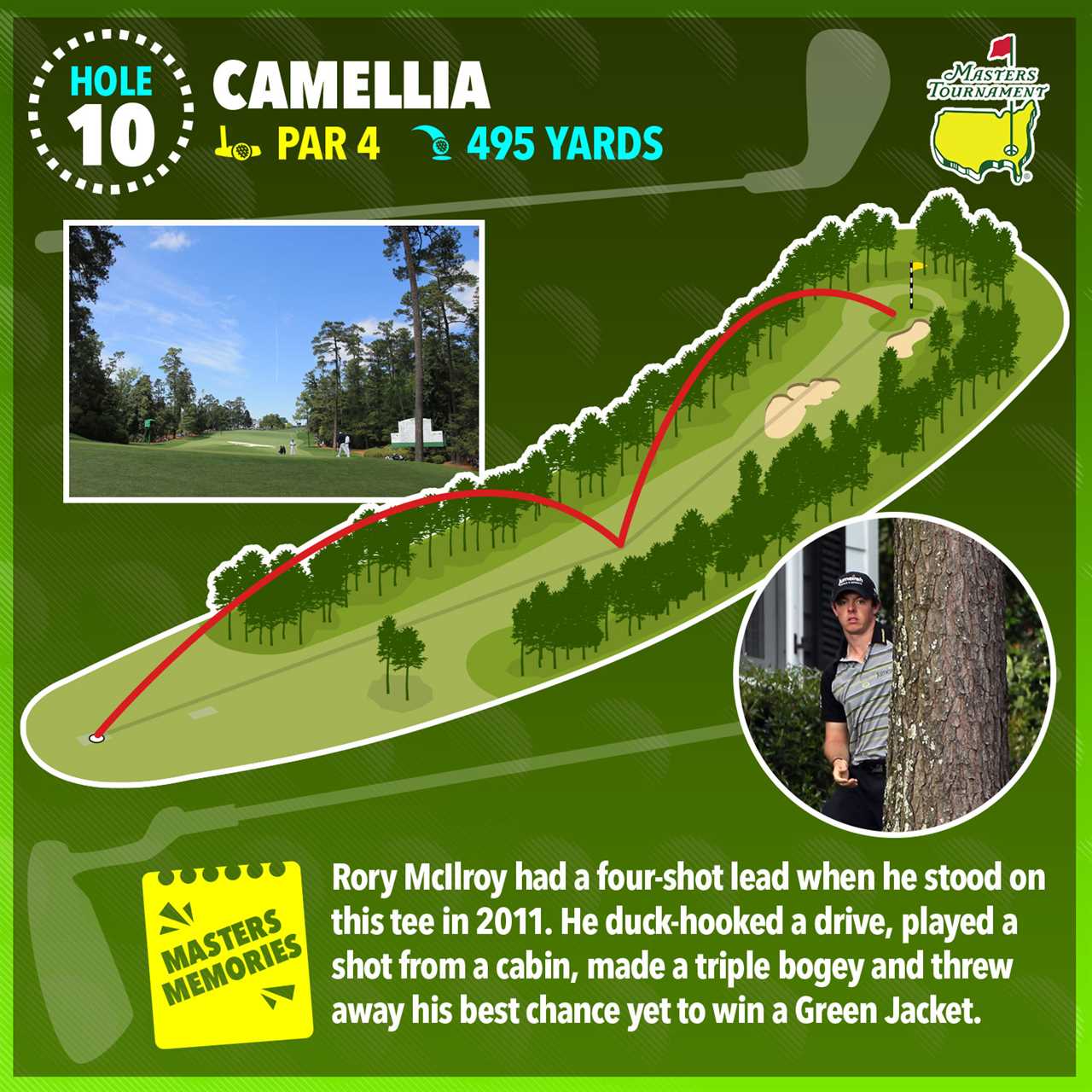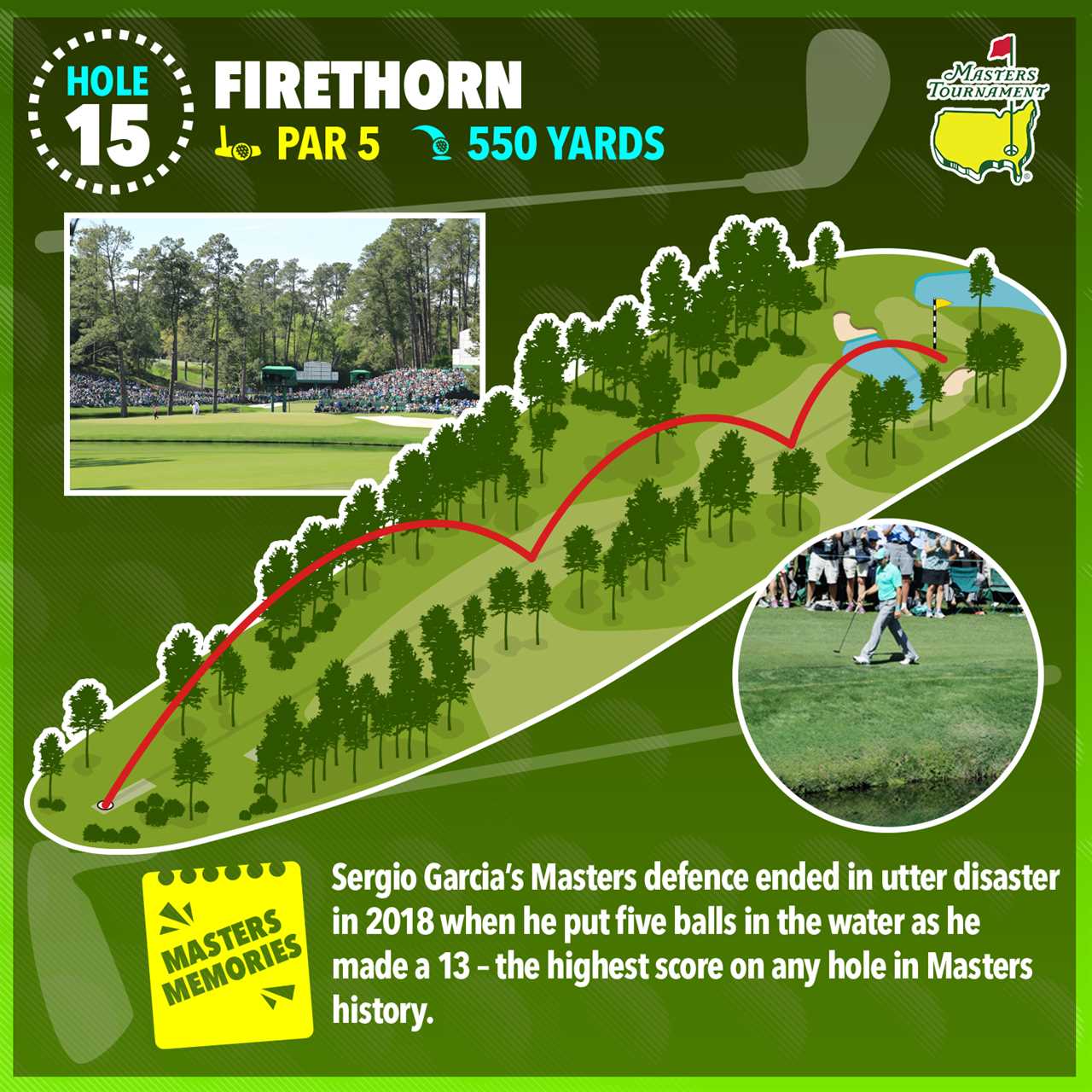IT IS that time again: The Masters – without doubt, the most iconic golf tournament in the world.
From the tradition of the champion decked out in their famous green jacket to the never-ending drama created by the best golfers on the planet, it is always, always a simply special weekend every April.

Scottie Scheffler was crowned 2024 Masters champion to claim his second green jacket

Tiger Woods celebrates winning the Masters in 2019

But arguably the real star of the show is the Augusta National golf course.
From Fire Thorn to Azalea – don’t forget Flowering Crab Apple and the treacherous Amen Corner – every hole is oh so very familiar.
From the ceremonial starters on Thursday morning, to the final putt on Sunday evening, the Masters never, ever fails to deliver.
It has witnessed some of the greatest moments of golfing history – like Tiger Woods’ incredible comeback win in 2019.
And last year, Scottie Scheffler lived up to the pre-tournament hype to finish four shots clear of major debutant Ludvig Aberg and join an elite list of golfing greats to have multiple green jackets.
Scheffler will put on the historic Masters Champions Dinner in the week of the tournament – before the real business gets underway.
SunSport takes you through the 18 holes the stars must negotiate if they want to follow in his footsteps at Augusta.
Each one throws up its own unique challenges and has written their dedicated chapters in Masters history…
1st – Tea Olive
Plays as one of the hardest holes on the course thanks to the subtle undulations of the green and magnet-like bunker on the right of the fairway.
The first tee shot is also one of the most nerve-wracking shots of the round so hit a bad one and it could set the tone for the rest of the day.

2nd – Pink Dogwood
This hole – lengthened by ten yards from 575 to 585 in 2024 – can throw up everything from an albatross to a bogey and is one of the most exciting on the course.
Players need to hit a raking draw off the tee and feather the second shot up the narrow shoot at the front of the green.

3rd – Flowering Peach
If the wind is blowing strong from behind and conditions are firm underfoot, then the longest hitters will smash a driver up near the green.
If they don’t, then it is all about laying up to a yardage that suits them for a wedge second shot to a hole where they will look for birdie.

4th – Flowering Crab Apple
The green is a massive target but players will be going in with a long iron and need to hit the correct part of the putting surface to leave themselves a look at birdie and par.
Danger lurks all around but it is better to miss it in the bunkers short because then players will be hitting into a green that slopes towards them.

5th – Magnolia
This hole is long, uphill and a dogleg to the left that forces players to hug the left side of the sloping fairway – while avoiding the bunkers, which require a carry of 315 yards to miss.
A demanding par four, it has been lengthened by 40 yards and was inspired by the legendary Road Hole at St Andrews.

6th – Juniper
Players will use a mid iron to hit down the slope to this undulating green, which can throw up a number of pin positions.
There used to be a stream in front of the green but that was taken out and now there remains a solitary bunker to gobble up a mishit shot.

7th – Pampas
Drives need to find the fairway here so players have ultimate control over spin for their second shots.
Five traps guard the green but, because pros will be going in with a short or mid iron, birdie is a decent shout on this hole.

8th – Yellow Jasmine
An uphill hole where the bunker on the right side of the fairway must be avoided if competitors want to reach the green in two.
The second shot will need to be a draw played around the trees to a long thin green which throws up the chance of an eagle.

9th – Carolina Cherry
A drive down the right side of the fairway gives the best angle into this green which slopes severely from back to front.
Players will need to watch the amount of spin on their second shots because even one which lands safely on the green could end up rolling back down the fairway.

10th – Camellia
This monster par four plays less than its yardage because of how steeply downhill it is.
Again a draw needs to be played off the tee with anything from a driver to a long iron but the difficulty doesn’t end there, with a sloping green another reason why this hole typically plays as the toughest on the course.

11th – White Dogwood
Kneel down and say a little prayer, because this is the start of Amen Corner.
The tee shot is downhill and needs to be hit from left to right.
The second shot must avoid the pond short left of the green.
Banks on the right can be used as a bailout. Par is a great score on the course’s hardest hole.

12th – Golden Bell
One of the world’s most famous holes. To quote Arnold Palmer’s wider saying on golf in general, the 12th at Augusta is deceptively simple yet endlessly complicated.
The swirling winds make club selection absolutely pivotal and Rae’s Creek sits short of the bunker and green.
The bank will funnel any balls hit short back into the water.

13th – Azalea
This hole was lengthened by 35 yards back in 2023.
Another brilliant risk/reward hole, this one arguably more than any other has been responsible for determining who ends up with the green jacket.
It has seen everything from Phil Mickelson’s astonishing shot from behind the trees to Woods putting into the water.
The green is guarded by a tributary to Rae’s Creek and four bunkers – not to mention a huge flowerbed – behind.

14th – Chinese Fir
Completely devoid of bunkers, this hole’s defence is its nerve-racking green which will test even the steadiest of hearts and hands.
The putting surface slopes significantly from left to right and every putt on it needs to be treated with the utmost respect.

15th – Firethorn
This hole is all about the second shot.
Players need to carry the water short, avoid the bunker on the right and not go long over the back, where more water awaits.
Like all of Augusta’s par fives, eagle here is just as likely as a bogey and it throws up many heart-in-your-mouth moments coming so late in the round.

16th – Redbud
If you put your money on there being a hole in one in the Masters, then chances are it will come here.
Competitors will go in with a short to mid iron to a green – redone after Hurricane Helene’s 130mph winds wreaked havoc in September 2024 – that slopes heavily from right to left.
The pin is often placed where balls naturally gather – but don’t go too far left into the water.

17th – Nandina
The tee shot and second shot should provide the pros with few troubles – but it’s a different story when they get to the green.
It slopes off in all directions and, should a player miss it, then there is no such thing as an easy up and down for par.
This was the site of CBS commentator Gary McCord’s “bikini wax” comment in 1994 that has seen him banned from Augusta for three decades.
It was also where three 100ft trees fell down suddenly during strong winds while play was going on in 2023 – thankfully nobody was hurt in the shocking scenes.

18th – Holly
One of golf’s most iconic tee shots, players will rip a driver or 3-wood through a narrow shoot of trees while hoping to avoid the sand on the left.
The green is split into two distinct tiers and is protected by a bunker short and another on the right, which will see a lot of action over the week.

 In The RoughGolf TipsPrivacy PolicyTerms And Conditions
In The RoughGolf TipsPrivacy PolicyTerms And Conditions
